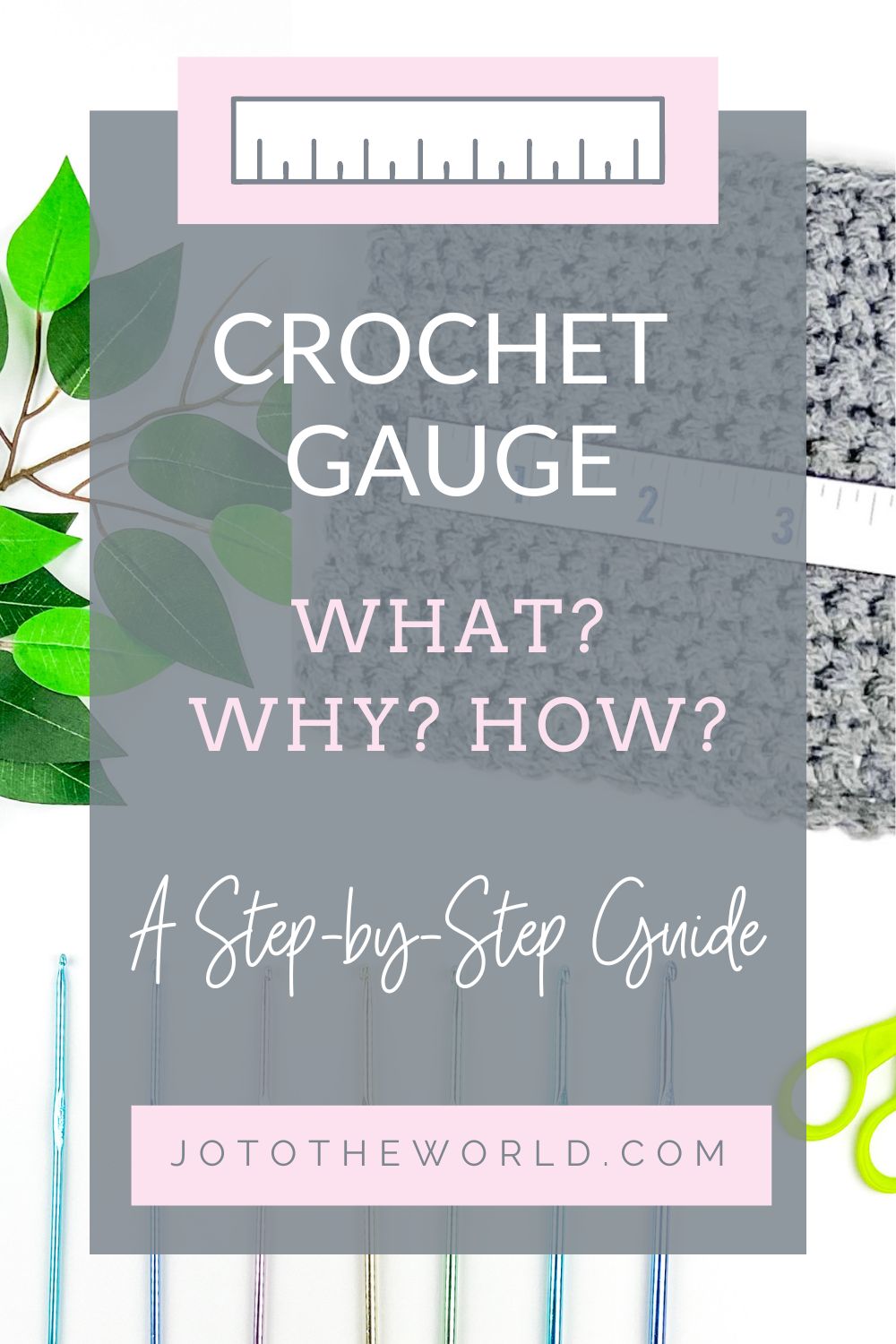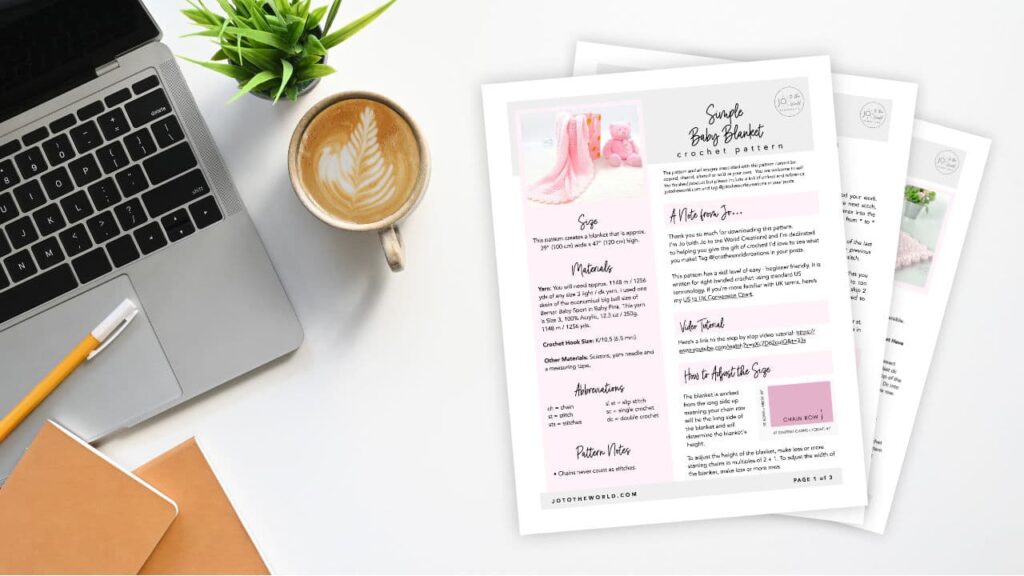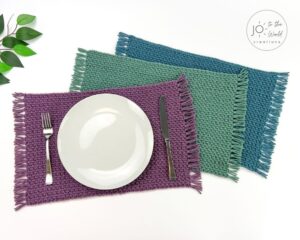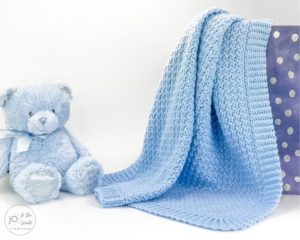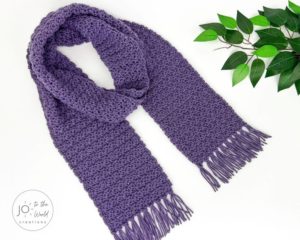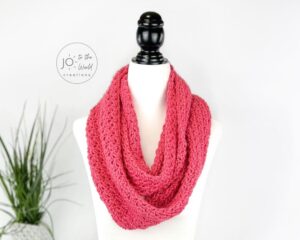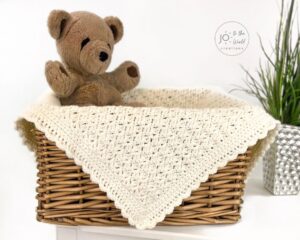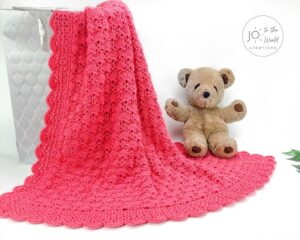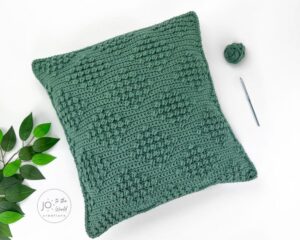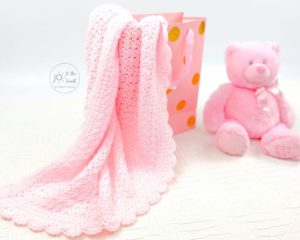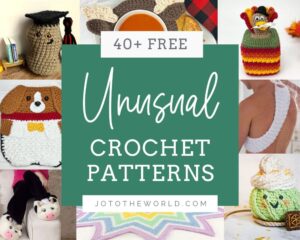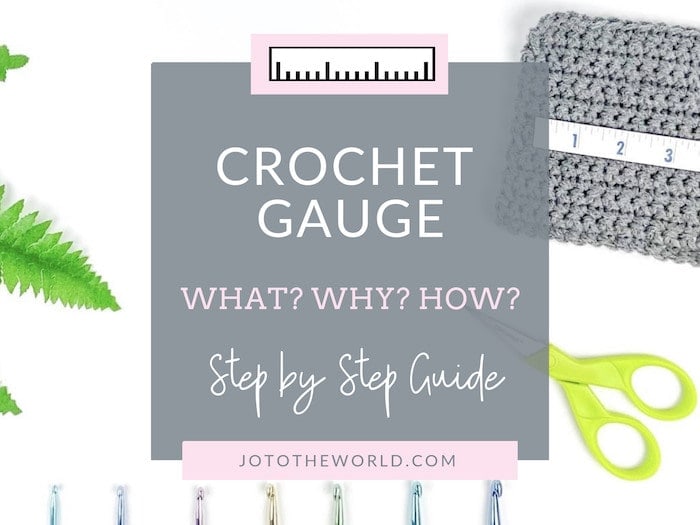
Crochet Gauge – A Step-by-Step Guide
Learn all about crochet gauge including how to make a swatch and adjust your gauge to ensure your project’s the right size. Crochet gauge chart included!
Before we begin, I would like to thank you for visiting Jo to the World Creations, a site dedicated to helping you give the gift of crochet.
More free patterns (that make awesome crochet gifts) are on the way! Sign up for my emails, follow me and never wonder “What should I make for…” again!
FREE PATTERNS FOR CROCHET GIFTS
Delivered to your inbox
AND GET A FREE PDF OF THE LOVE PILLOW
& A FREE CROCHET CHEAT SHEET
Unsubscribe at any time.
Delivered Socially
Follow Me on
What is Crochet Gauge?
The gauge of your work is the number of stitches and rows in a designated area. For example, if the gauge stated on a pattern is 4″ x 4″ = 12 single crochet stitches and 15 rows, what this means is that within 4″ measured horizontally, you should have 12 single crochet stitches and within 4″ measured vertically, you should have 15 rows.
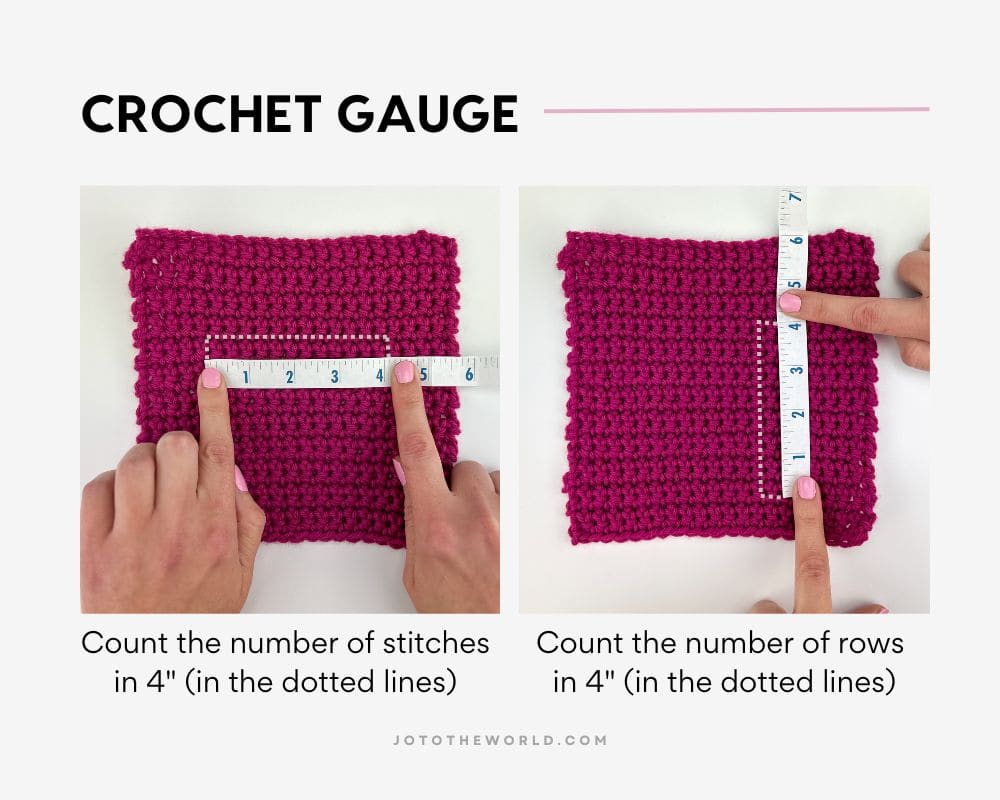
Crochet hook sizes and yarn weight play a major role in determining the gauge.
Notes: instead of 4″ x 4″, some patterns may just say: 4″ but that still means to measure 4″ x 4″. Also, gauge is not always measured within a 4″ x 4″ area. And, gauge is not always measured with single crochet stitches. The pattern will state how the gauge is to be measured and indicate what stitches to measure.
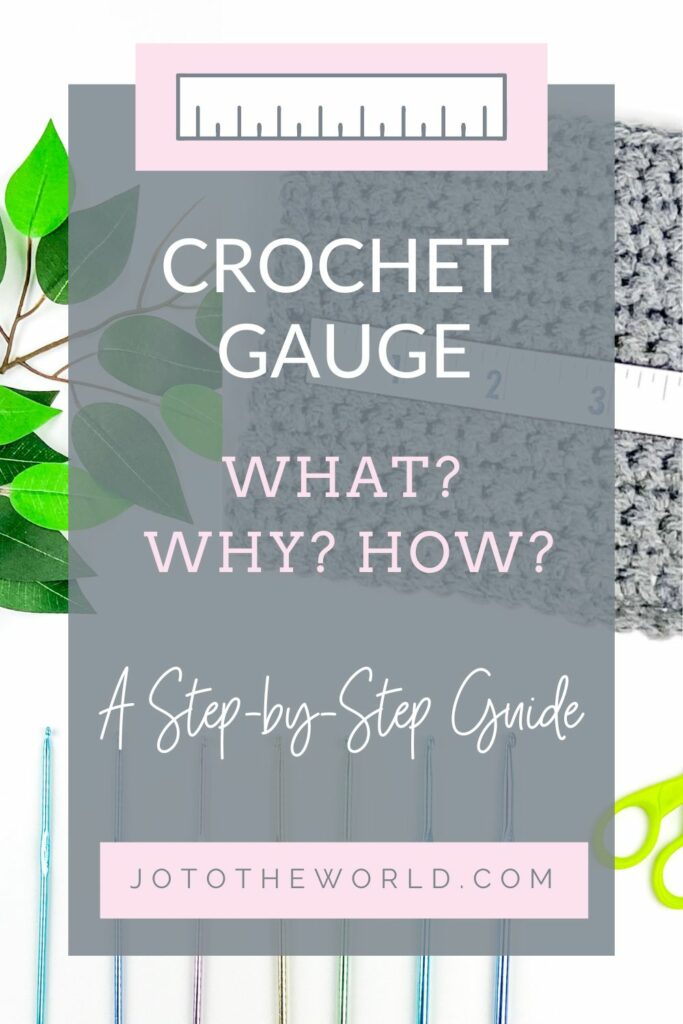
Why Measure and Check Crochet Gauge?
When a pattern calls for a specific crochet hook size and specific yarn, what this means is that the designer used that hook size and that yarn to complete the design.
Each of us crochets differently. Some of us crochet quite loosely while others crochet very tightly. How loose and tight we crochet is called tension. You could follow the exact same pattern using the exact same hook size and yarn as the designer and have your finished work be a completely different size. This is because your stitches may be looser or tighter than the designer’s stitches.
Your tension, your crochet hook sizes and yarn weight will determining the gauge. To help ensure your design turns out to be the same size as what’s intended, it is recommended that you always make a gauge swatch and check your gauge. Gauge is especially important for items that need to to be a certain size such as hats, clothing, tissue box covers, etc. For scarves and blankets, the exact size is not as important and you can skip this step if you wish.
Affiliate Disclosure: This post may contain affiliate links meaning I may receive a commission for purchases made through links in this post at no extra cost to you. As an Amazon Associate, I earn from qualifying purchases.
Crochet Gauge Swatch
The goal of checking the gauge is to see if your stitches, using the yarn you selected and hook size, match the designers.
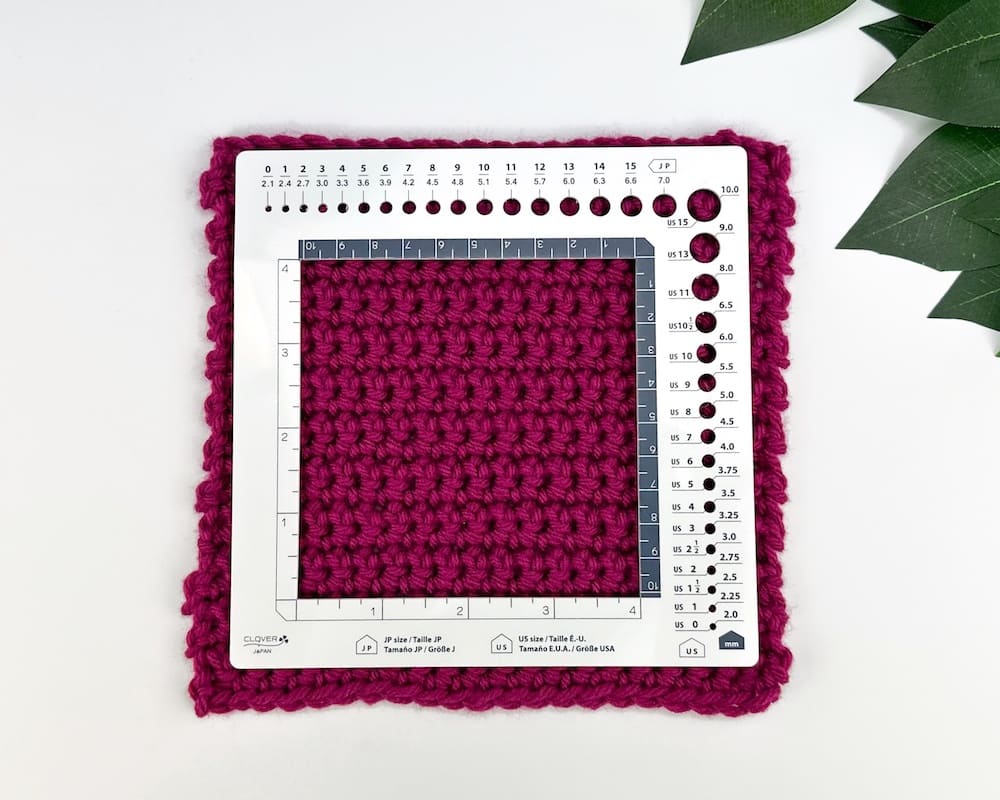
We do this first, before starting a project, to save you from making your project too big or too small (like when my perfect newborn baby hat was way too small for my newborn baby!)
All you need to do is make a little sample of the pattern, which it called a swatch. Then count how many stitches and rows are in that swatch. Then check to see if those numbers matches the pattern. If it matches, great! If it doesn’t continue reading below on how to fix it.
How to Read the Pattern Gauge
Under the “Gauge” section of the pattern, it will indicate the number of stitches (and which stitch/stitches) and rows in a specific area.
Example 1: 4″ x 4″ = 13 sc (single crochet stitches) and 14 rows
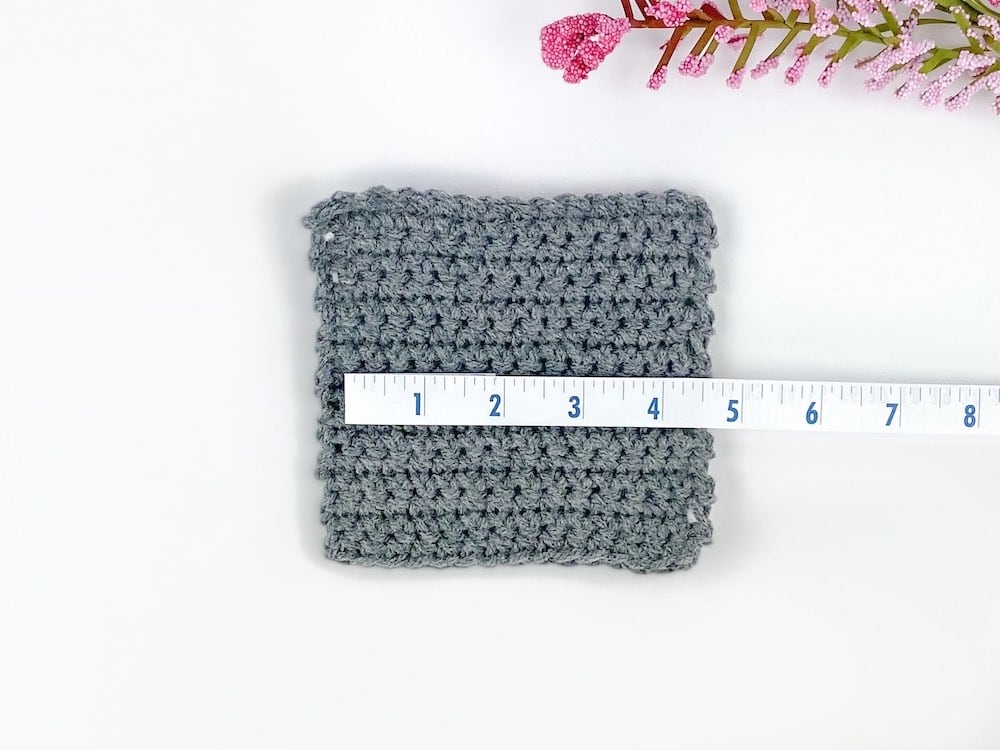
What this means: there should be 13 single crochet stitches within a 4 inch area, measured horizontally.
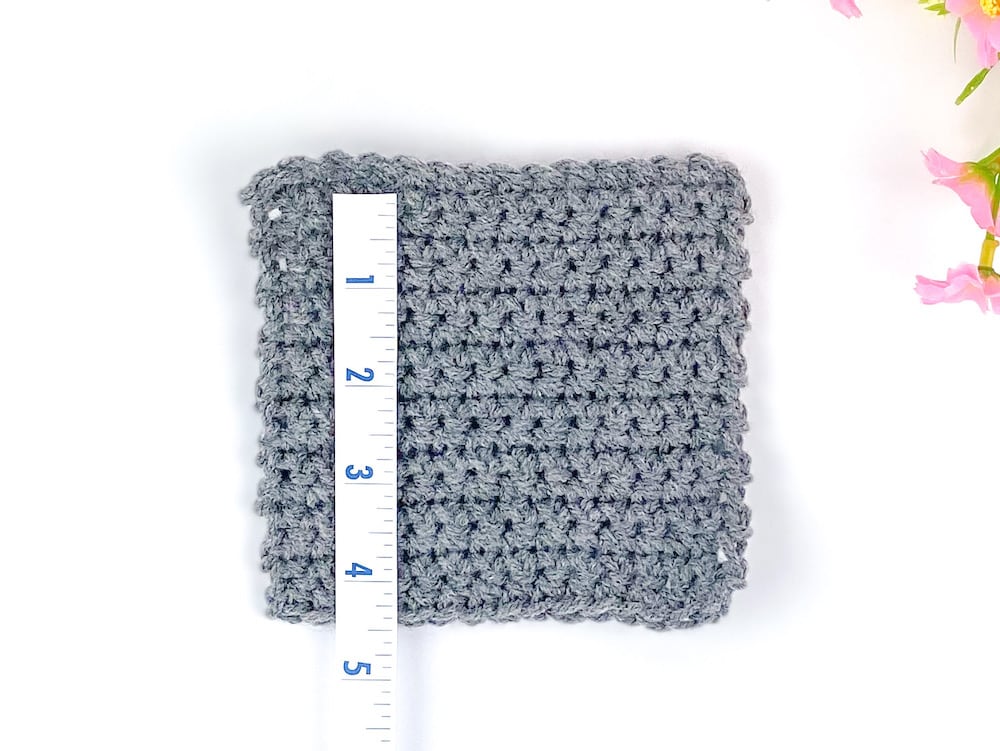
It also means that when you measure the swatch vertically, there should be 14 rows within a 4 inch area.
Here’s another example:
Example 2: 4” x 4” = 10 sts (counting both sc and dc sts) and 11 rows made as a flat swatch. Pattern for gauge swatch: ch 17. Row 1: In the second ch from hook, sc. In the next ch, dc. *In the next ch, sc. In the next ch, dc.* Repeat from * to * across. Row 2: Ch 1 and turn. In the first st, sc. In the next st, dc. *In the next st, sc. In the next st, dc.* Repeat from * to * across. Row 3 and on: Repeat Row 2 until your swatch is 6” high.
In this second example, there should be 10 stitches (counting both single crochet and double crochet stitches) within a 4 inch area, measured horizontally. And, there should be 11 rows within a 4 inch area, measured vertically.
How to Measure and Check Crochet Gauge
To check your gauge, use the recommended hook size from the pattern and make a sample of the area with a few more stitches than what is indicated under the gauge. That is because the start and end of the work can be different sizes so we always want to measure only the stitches in the middle.
1. Make a Gauge Swatch
In the first example above (4″ x 4″ = 13 sc and 14 rows), I would recommend making a swatch with 17 stitches.
To make a swatch with this number of stitches:
- Chain 18.
- Row 1: In the 2nd chain from hook, sc. Sc in each stitch across (17 sc).
- Row 2: In the 1st st (the st attached to ch), sc. Sc in each st across. (17 sc).
- Repeat Row 2 until your swatch is more than what is stated in the pattern gauge. In this example, the pattern gauge is 14 rows so make 16 rows in total.
If the pattern for the gauge is provided, follow those instructions.
Measure the Stitches and Rows
Then get out a measuring tape or Gauge Ruler. Measuring in the middle of your swatch (not end ends), count the number of stitches within 4″ measured horizontally and the number of rows within 4″ measured vertically.
Sometimes patterns will use a different area (not 4″ x 4″) so look at the area it wants you to measure and follow the same steps.
Note about half stitches and rows: half stitches and rows count too! We always round up so if there is half or more of the stitch or row included in the area you are measuring, count that as a stitch or row. If there’s less than half of the stitch or row, don’t count it.
3. Check your gauge
Now compare the number of rows and stitches from your swatch to what’s listed in the pattern. Does it match? If it matches, great! You can now start the pattern.
If you’re gauge doesn’t match, here’s how to fix it:
If you have MORE stitches and/or rows than what the pattern gauge states, your finished item will be too small and might not fit (plus you’ll have lots of leftover yarn). Redo your swatch with a LARGER hook.
If you have LESS stitches and/or rows than what the pattern gauge states, your finished item will be too big and you might not have enough yarn. Redo your swatch with a SMALLER hook.
Crochet Gauge Chart
For each yarn weight there is a recommended gauge. Note that these are subjective and based on the most common gauge for each size yarn. The gauges listed in this chart are only guidelines from the Craft Yarn Council’s Standard Yarn Weight System. You’ll also notice the gauge stated only has the number of stitches in an 4″ area, not the number of rows.
| Yarn Size | Yarn Types | Hook Sizes | Gauge |
|---|---|---|---|
| Size 0 – Lace | Fingering or 10-count crochet thread | B/1 (2.25 mm) or Steel Hooks | 4″ = 32-42 dc |
| Size 1 – Fine | Sock, Fingering, Baby | B/1 (2.25 mm) to E/4 (3.5 mm) | 4″ = 21-32 sc |
| Size 2 – Super Fine | Sport, Baby | E/4 (3.5 mm) to 7 (4.5 mm) | 4″ = 16-20 sc |
| Size 3 – Light | Double knit (dk), Light worsted | G/6 (4.00 mm) to I/9 (5.5 mm) | 4″ = 12-17 sc |
| Size 4 – Medium | Worsted, Afghan, Aran | H/8 (5 mm) to K/10.5 (6.5 mm) | 4″ = 11-14 sc |
| Size 5 – Bulky | Chunky, Craft, Rug | K/10.5 (6.5 mm) to M/13 (9 mm) | 4″ = 8-11 sc |
| Size 6 – Super Bulky | Super Chunky, Roving | M/13 (9 mm) to Q (15 mm) | 4″ = 7-9 sc |
| Size 7 – Jumbo | Ultra, Roving | Q (15 mm) or larger | 4″ = 6 sc or less |
I hope this helps you make the perfect fitting crochet item.
More Crochet Resources
Download. Print. Keep.
Get Instant Access to ALL Printable Patterns
Make your crocheting more enjoyable, relaxing and productive with printable PDF patterns.
- 100+ premium crochet patterns.
- Download, save and print from any device.
- No ads or popups!
Not sure yet? Take a look at the Pattern Library and see all the patterns you can download once you’re a member.
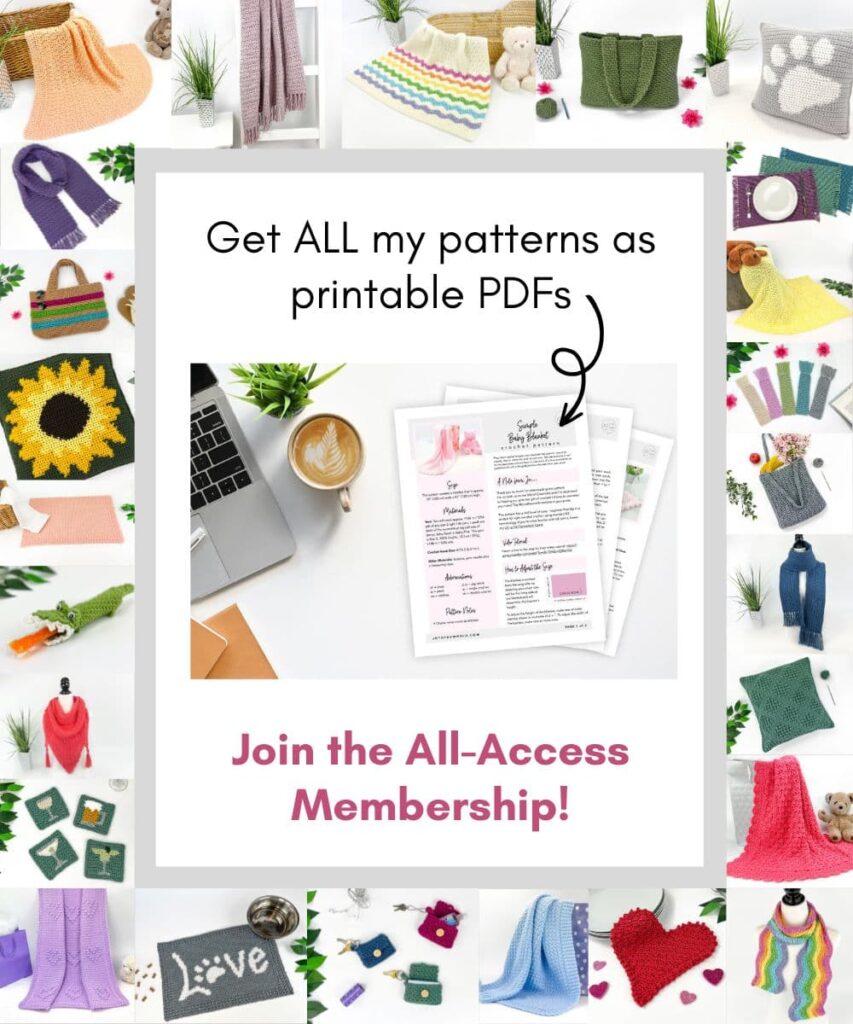
Save with Pattern Bundles
For a limited time, I’ve grouped some of my most popular crochet patterns and I’m offering them as pattern bundles where you can get the printable versions for one low, discounted price. Check out these incredible Crochet Pattern Bundles.
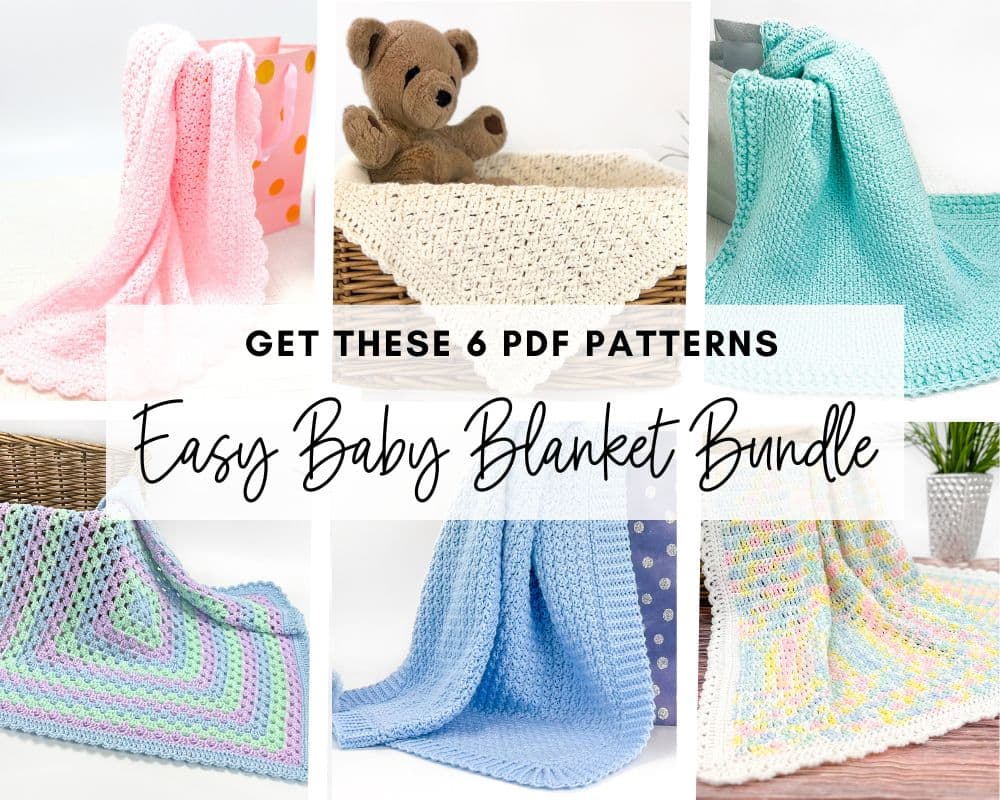
Easy Baby Blanket Bundle
With this Easy Baby Blanket Bundle, you’ll get SIX easy crochet baby blankets as printable downloads. Each pattern includes step-by-step instructions and a full video tutorial.
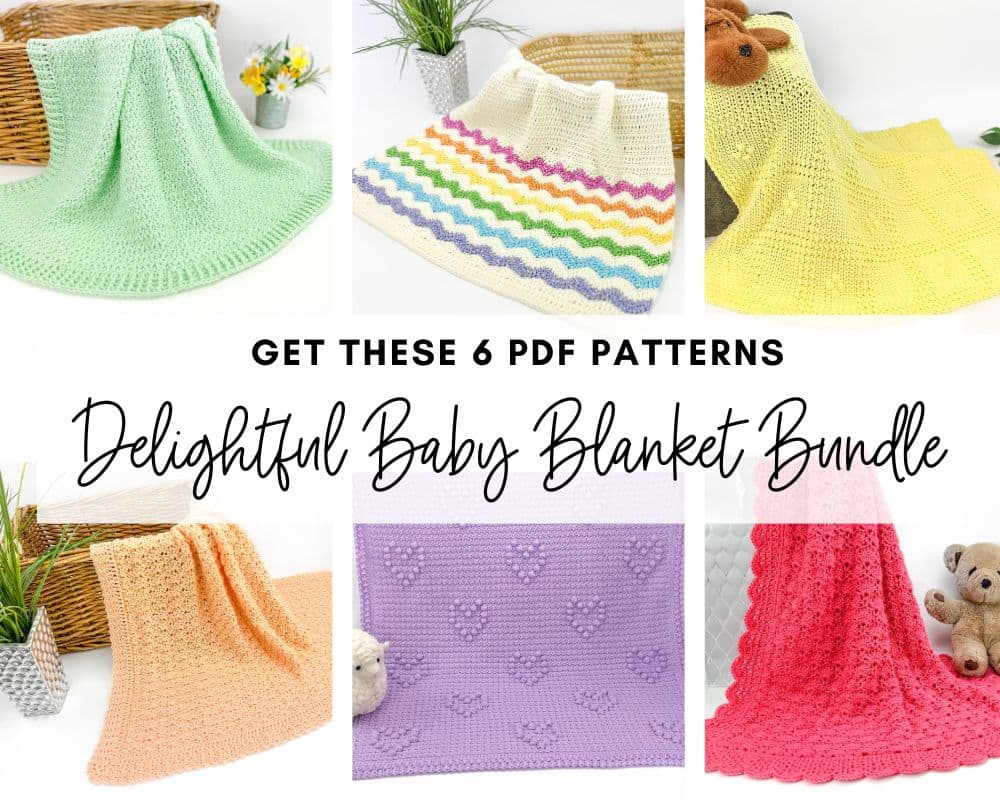
Delightful Baby Blanket Bundle
This incredible deal includes six SIX blanket patterns that are a delight to make and create truly stunning blankets – all as printable PDFs for one low, discounted price.
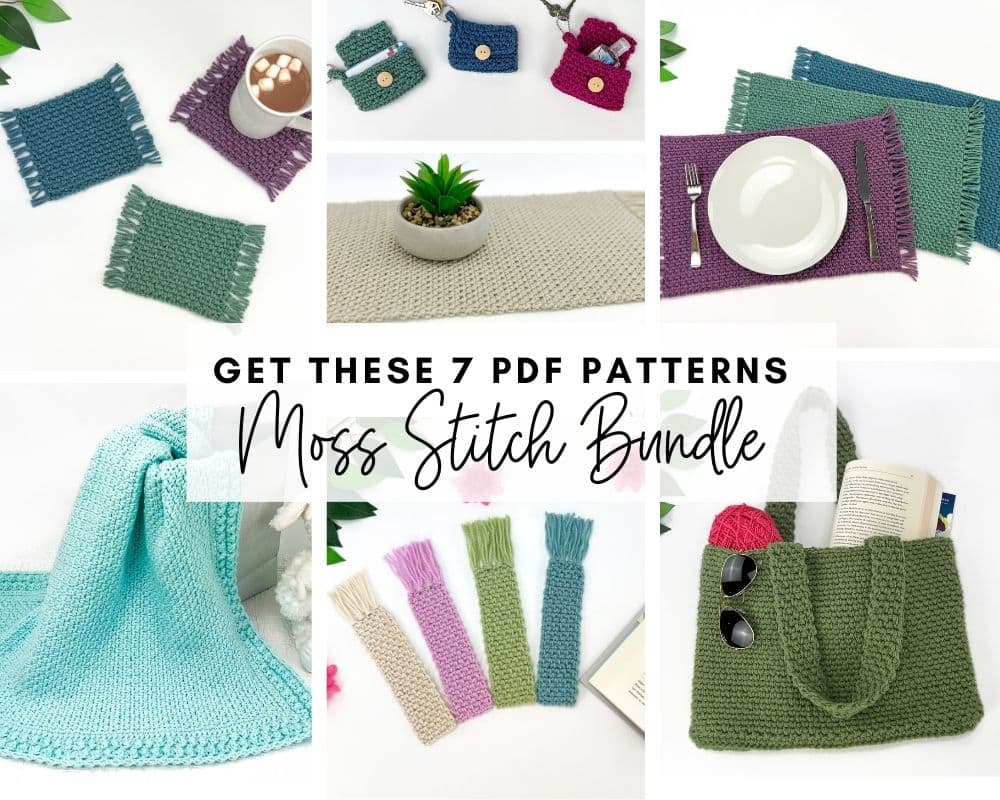
Moss Stitch Pattern Bundle
All your favorite Moss Stitch patterns in one bundle! Get SEVEN easy Moss Stitch crochet patterns as ad-free, print-ready PDFs to print, save and keep forever.
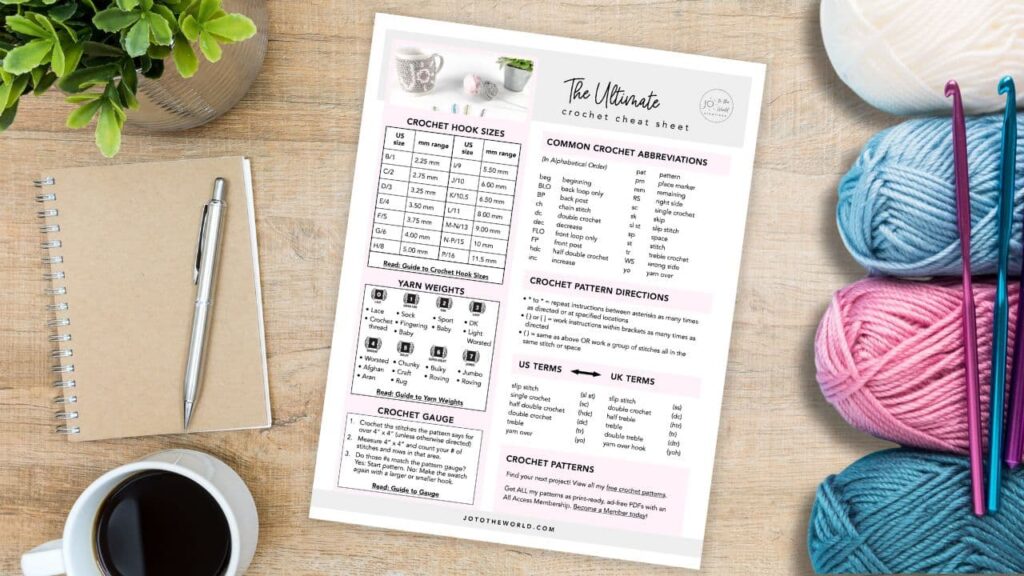
Free Crochet Cheat Sheet
Get instant access to this Ultimate Crochet Cheat Sheet! Plus you’ll receive free patterns for crochet gifts delivered right to your inbox!
Featured Crochet Patterns
Pattern Collections
Free Patterns for Crochet Gifts
Never miss a pattern! Get all my secrets to making incredible crochet gifts as well as new free crochet patterns and exclusive deals when you sign up for my newsletter (it’s free!).

